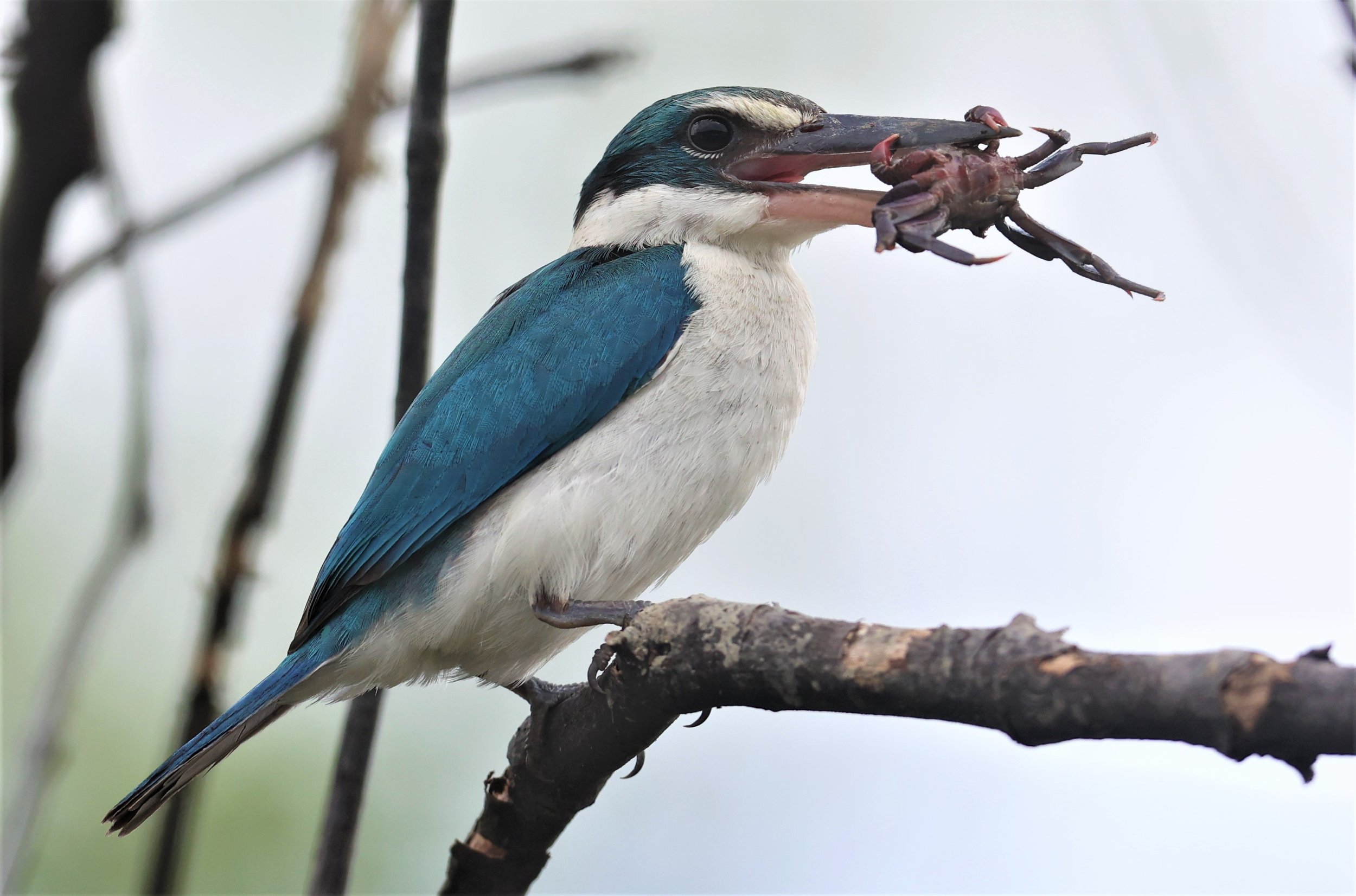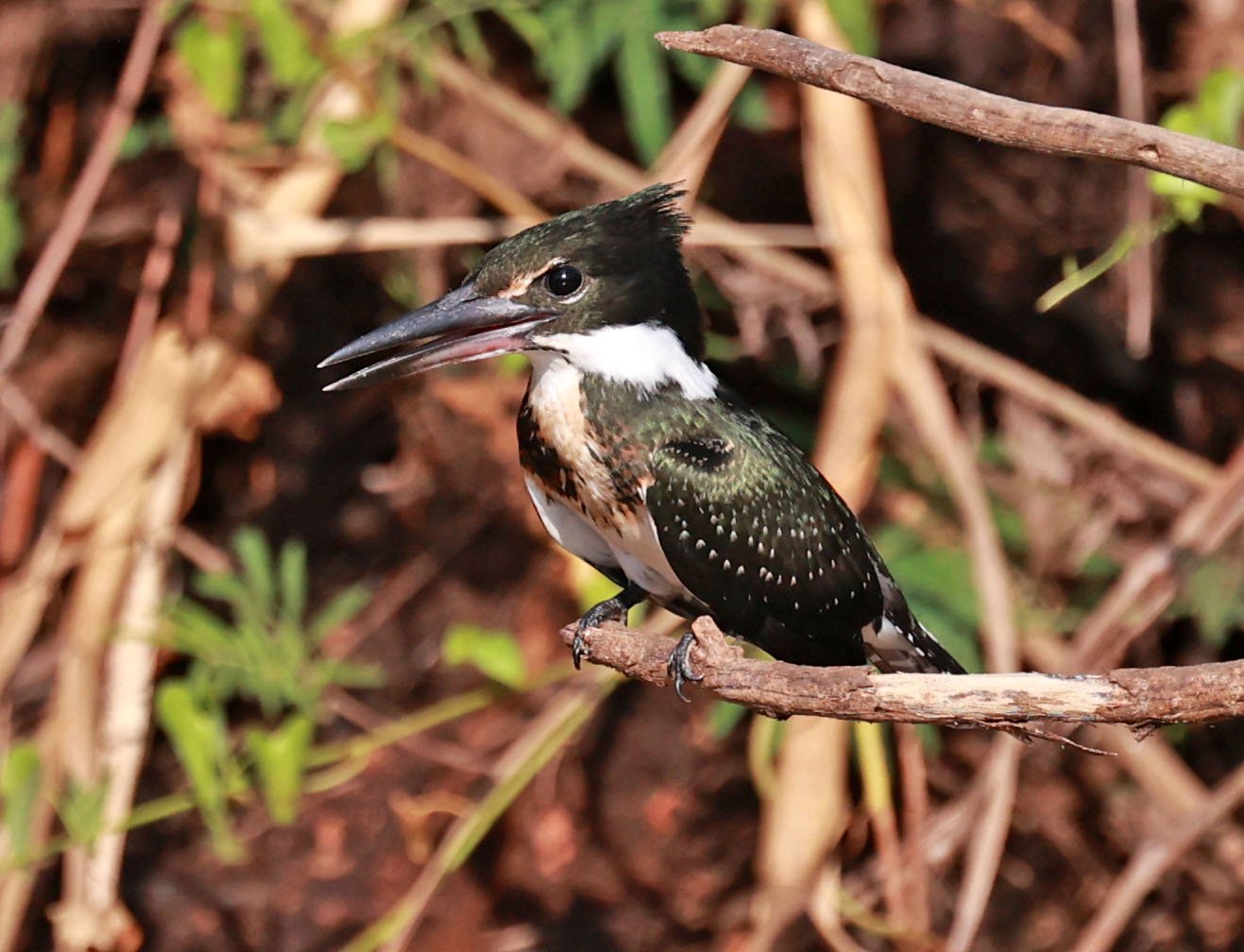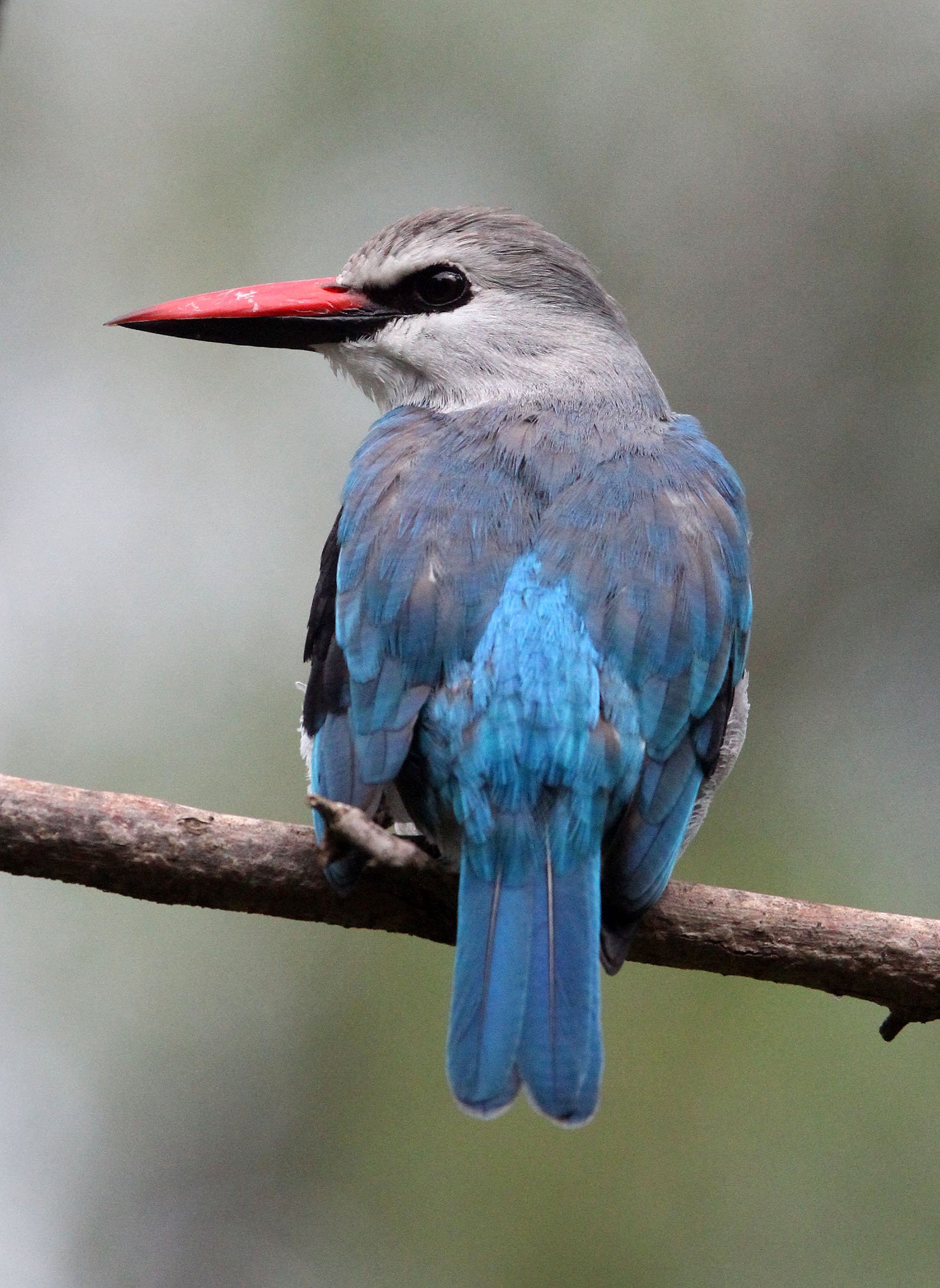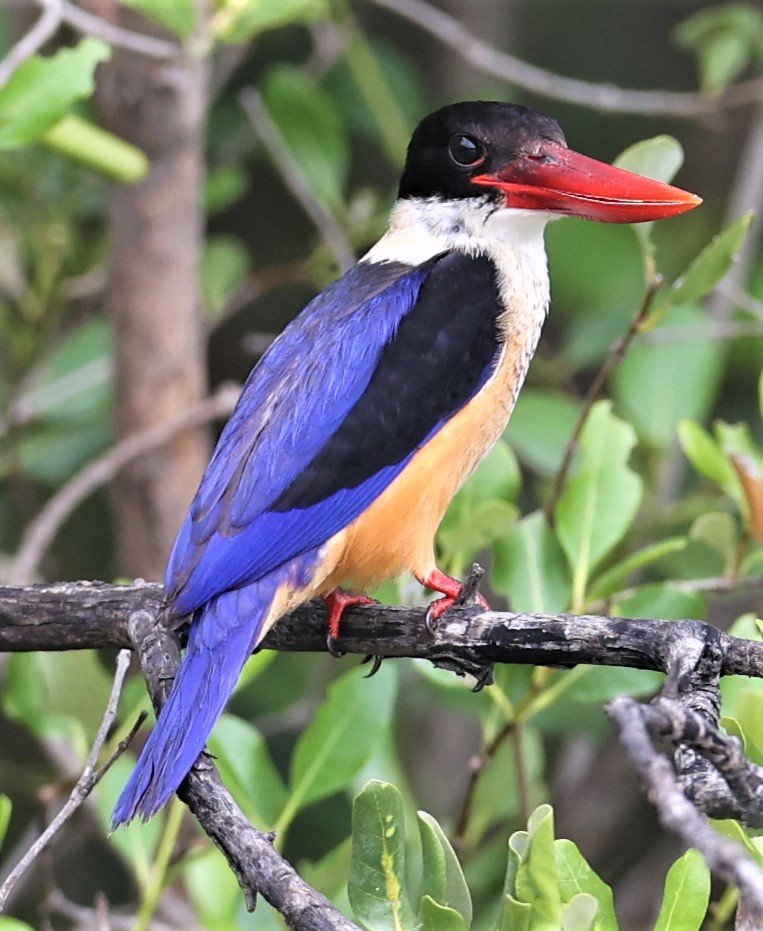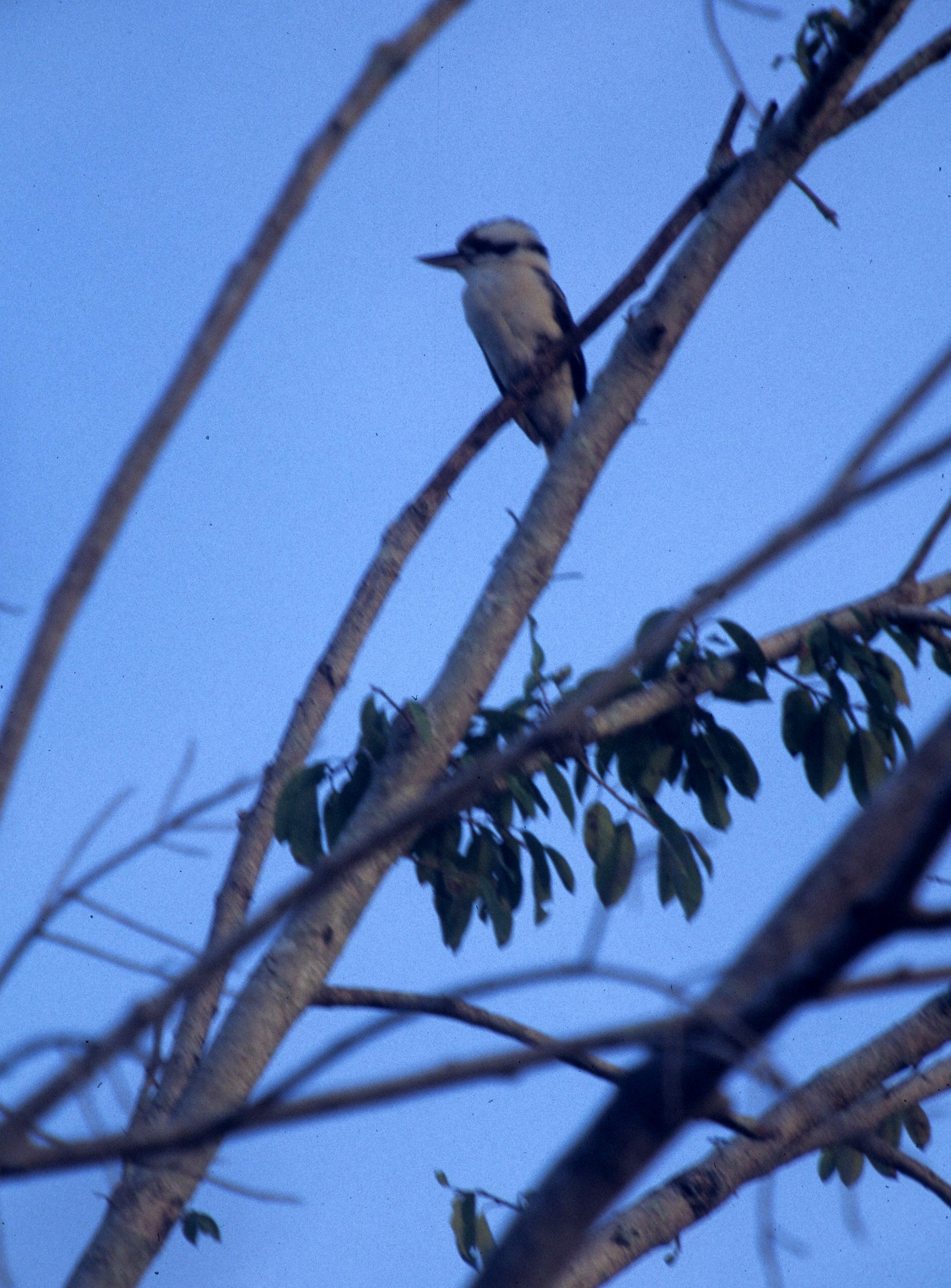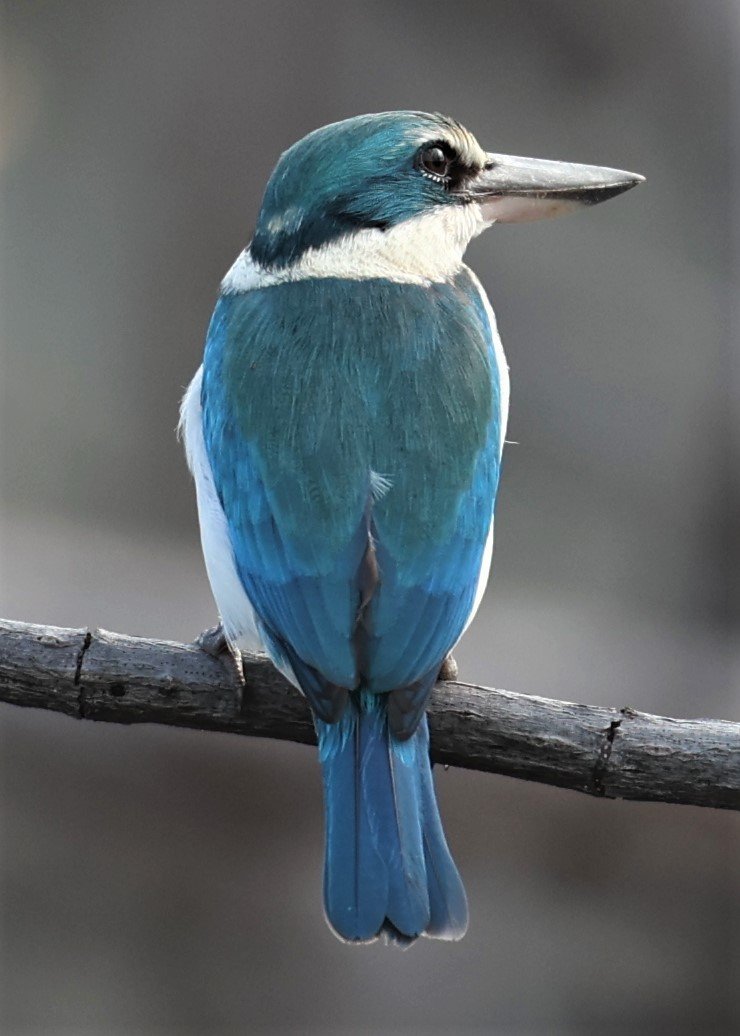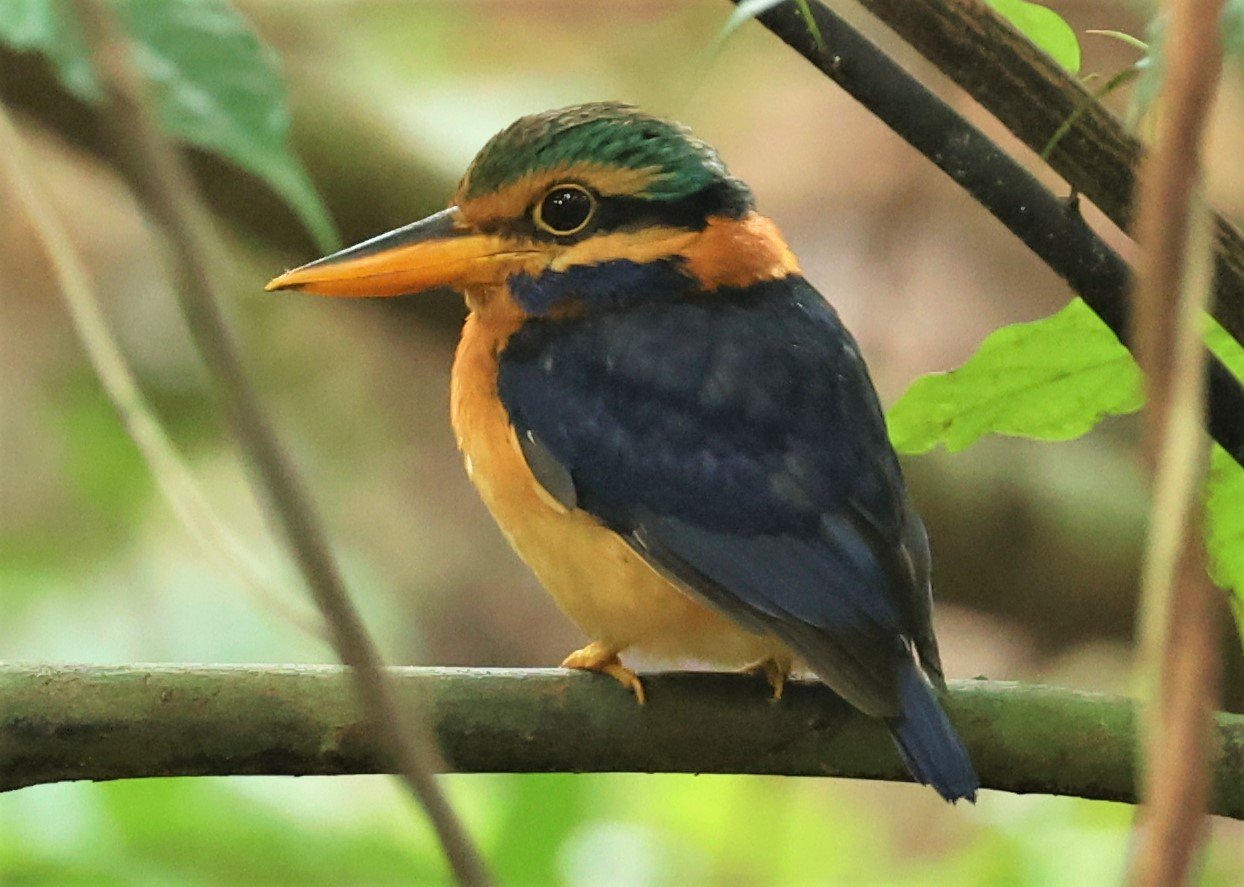
Kingfishers

Kingfishers are a family, the Alcedinidae, of small to medium-sized, brightly colored birds in the order Coraciiformes. They have a cosmopolitan distribution, with most species found in the tropical regions of Africa, Asia, and Oceania, but also can be seen in Europe. They can be found in deep forests near calm ponds and small rivers. The family contains 116 species and is divided into three subfamilies and 19 genera. All kingfishers have large heads, long, sharp, pointed bills, short legs, and stubby tails. Most species have bright plumage with only small differences between the sexes. Most species are tropical in distribution, and a slight majority are found only in forests.
Collared Kingfisher consuming a crab at Bang Pu Mangrove Forest, Thailand
They consume a wide range of prey usually caught by swooping down from a perch. While kingfishers are usually thought to live near rivers and eat fish, many species live away from water and eat small invertebrates. Like other members of their order, they nest in cavities, usually tunnels dug into the natural or artificial banks in the ground. Some kingfishers nest in arboreal termite nests. A few species, principally insular forms, are threatened with extinction. In Britain, the word "kingfisher" normally refers to the common kingfisher.
The kingfishers have a cosmopolitan distribution, occurring throughout the world's tropical and temperate regions. They are absent from the polar regions and some of the world's driest deserts. Several species have reached islands groups, particularly those in the south and east Pacific Ocean. The Old World tropics and Australasia are the core areas for this group. Europe and North America north of Mexico are very poorly represented, with only one common kingfisher (common kingfisher and belted kingfisher, respectively), and two uncommon or very local species each: (ringed kingfisher and green kingfisher in the southwestern United States, pied kingfisher and white-throated kingfisher in southeastern Europe). The six species occurring in the Americas are four closely related green kingfishers in the genus Chloroceryle and two large crested kingfishers in the genus Megaceryle. Even tropical South America has only five species plus the wintering belted kingfisher. In comparison, the African country of the Gambia has eight resident species in its 120-by-20-mile (193 by 32 km) area.
Rufous-collared Kingfisher is a forest Kingfisher species. This is a male from Krung Ching, Southern Thailand
Individual species may have massive ranges, like the common kingfisher, which ranges from Ireland across Europe, North Africa, and Asia as far as the Solomon Islands in Australasia, or the pied kingfisher, which has a widespread distribution across Africa and Asia. Other species have much smaller ranges, particularly insular species which are endemic to single small islands. The Kofiau paradise kingfisher is restricted to the island of Kofiau off New Guinea.
Kingfishers occupy a wide range of habitats. While they are often associated with rivers and lakes, over half the world's species are found in forests and forested streams. They also occupy a wide range of other habitats. The red-backed kingfisher of Australia lives in the driest deserts, although kingfishers are absent from other dry deserts like the Sahara. Other species live high in mountains, or in open woodland, and a number of species live on tropical coral atolls. Numerous species have adapted to human-modified habitats, particularly those adapted to woodlands, and may be found in cultivated and agricultural areas, as well as parks and gardens in towns and cities.
The below gallery contains the species of Kingfishers I have been fortunate to have seen in their natural habitat. Most of these species were seen before my interest in birds as target species. My focus was (and still is) mammals, but while I was mammal-watching, I would document birds whenever I had the opportunity. Somehow I managed to see 33 species of Kingfishers, although I have a long way to go to see all of the nearly 100 extant species!
Each of the images below is a link to gallery containing all of the images I currently have of each species or genus.



